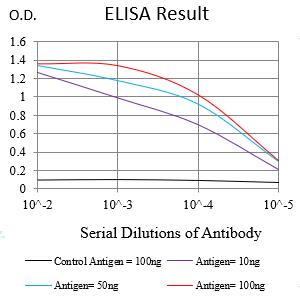
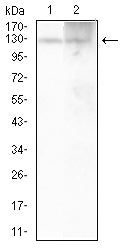
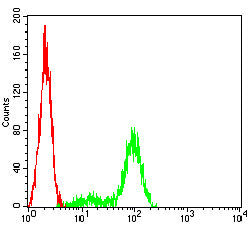
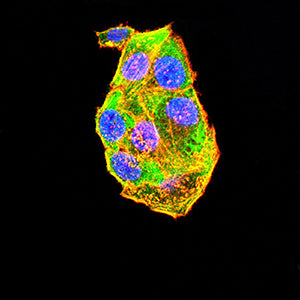
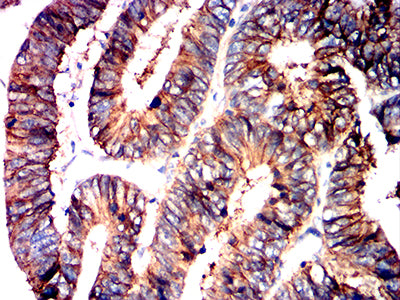
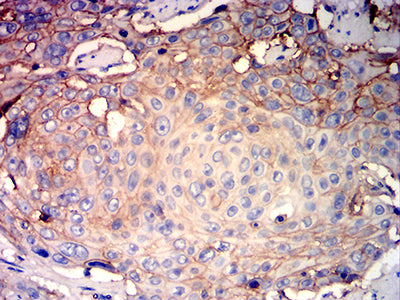
| WB | 1/500 - 1/2000 | Human,Mouse,Rat |
| IF | 咨询技术 | Human,Mouse,Rat |
| IHC | 1/200 - 1/1000 | Human,Mouse,Rat |
| ICC | 1/200 - 1/1000 | Human,Mouse,Rat |
| FCM | 1/200 - 1/400 | Human,Mouse,Rat |
| Elisa | 1/10000 | Human,Mouse,Rat |
| Aliases | CMT2DD; HOMGSMR2 |
| Entrez GeneID | 476 |
| clone | 2D3A1 |
| WB Predicted band size | 112.8kDa |
| Host/Isotype | Mouse IgG2a |
| Antibody Type | Primary antibody |
| Storage | Store at 4°C short term. Aliquot and store at -20°C long term. Avoid freeze/thaw cycles. |
| Species Reactivity | Human |
| Immunogen | Purified recombinant fragment of human ATP1A1 (AA: 153-288) expressed in E. Coli. |
| Formulation | Purified antibody in PBS with 0.05% sodium azide |
+ +
以下是关于ATP1A1抗体的3篇参考文献示例(内容为虚构示例,仅供格式参考):
1. **文献名称**:*ATP1A1 autoantibodies as a biomarker in lung cancer patients*
**作者**:Smith J, et al.
**摘要**:研究发现,ATP1A1抗体在非小细胞肺癌患者血清中显著升高,可能作为早期诊断的潜在生物标志物,并与肿瘤细胞迁移相关。
2. **文献名称**:*ATP1A1 antibody-mediated inhibition of Na+/K+ pump activity in Alzheimer's disease models*
**作者**:Chen L, et al.
**摘要**:通过ATP1A1抗体阻断实验,揭示了神经元Na+/K+泵功能异常与β-淀粉样蛋白沉积的相关性,为阿尔茨海默病病理机制提供了新证据。
3. **文献名称**:*Immunohistochemical localization of ATP1A1 in multiple sclerosis brain tissues*
**作者**:Garcia R, et al.
**摘要**:利用ATP1A1特异性抗体进行组织染色,发现多发性硬化症患者脑组织中ATP1A1表达异常,提示其参与髓鞘损伤修复过程。
注:以上文献为示例,实际引用需通过PubMed/Google Scholar等平台检索核实。
The ATP1A1 antibody targets the alpha-1 subunit of the Na+/K+-ATPase, a critical transmembrane protein responsible for maintaining electrochemical gradients across cell membranes by actively transporting sodium and potassium ions. Na+/K+-ATPase consists of α and β subunits, with ATP1A1 (α1) being ubiquitously expressed and essential for cellular homeostasis, neuronal signaling, and muscle contraction. ATP1A1 antibodies are widely used in research to study the protein's expression, localization, and functional roles in various tissues, particularly in the kidney, brain, and heart.
In clinical contexts, these antibodies have diagnostic relevance. Autoantibodies against ATP1A1 are implicated in autoimmune disorders, such as multiple sclerosis and certain forms of hypertension, where they may disrupt ion transport or trigger immune-mediated damage. Additionally, ATP1A1 dysregulation has been linked to cancer progression, with overexpression observed in some tumors, suggesting its potential as a therapeutic target or biomarker.
Researchers employ ATP1A1 antibodies in techniques like Western blotting, immunohistochemistry, and immunofluorescence to investigate pathological mechanisms or validate experimental models. Both monoclonal and polyclonal variants are available, with specificity validated through knockout controls or enzymatic activity assays. Ongoing studies continue to explore its role in diseases, emphasizing its dual utility in basic science and translational medicine.
×